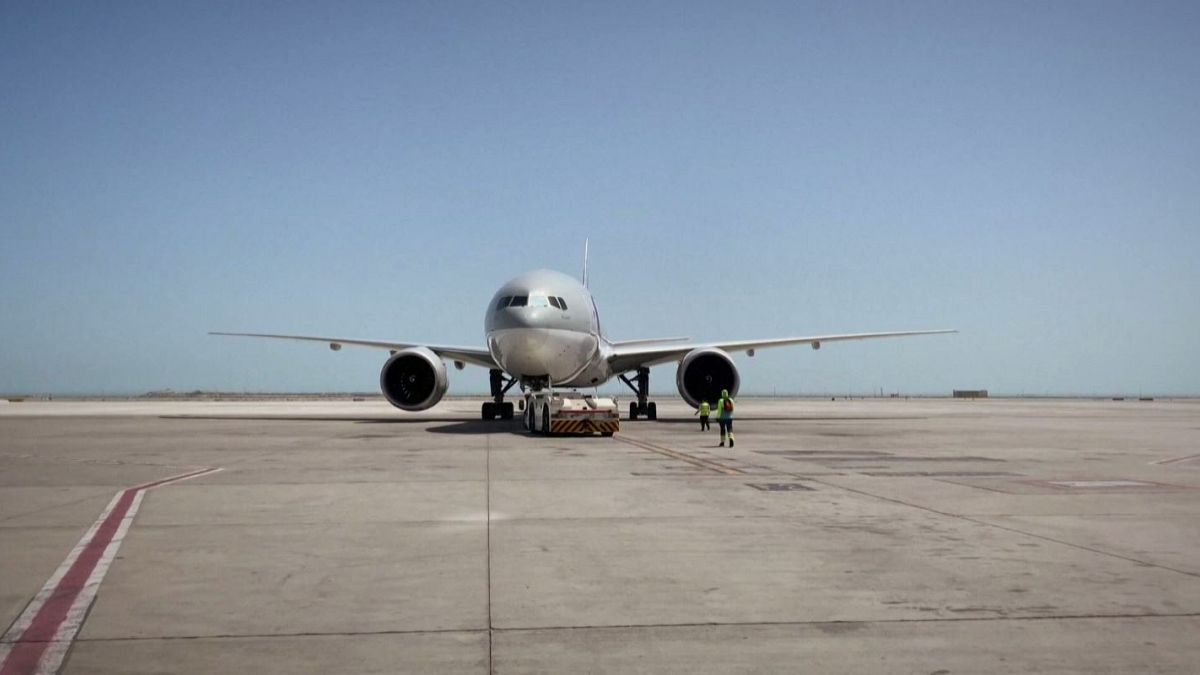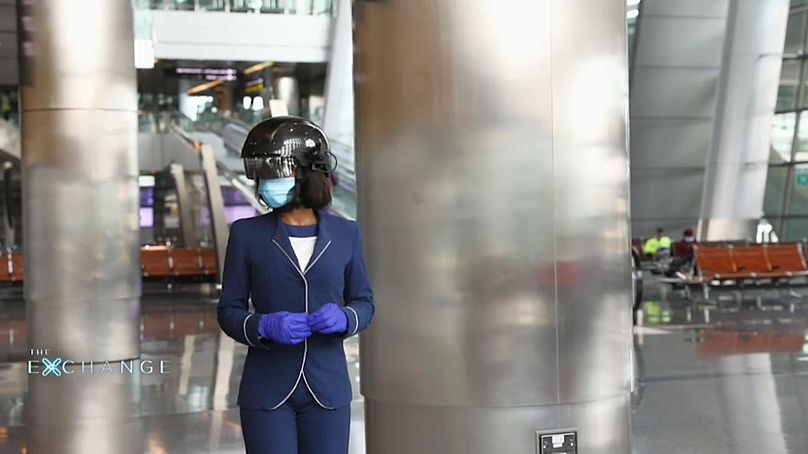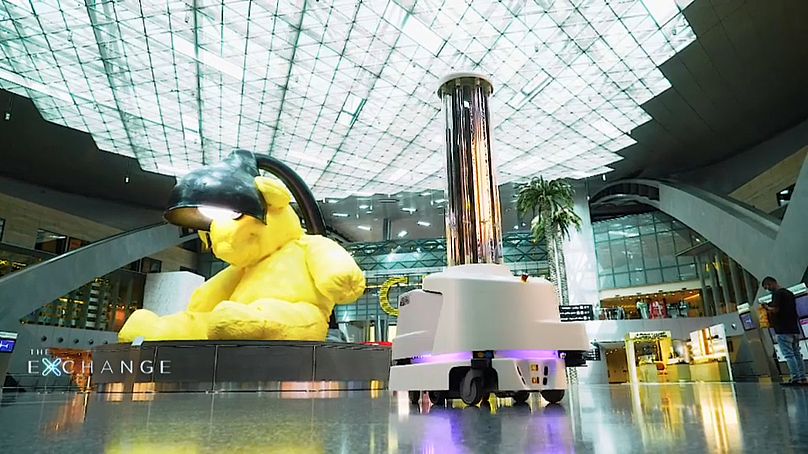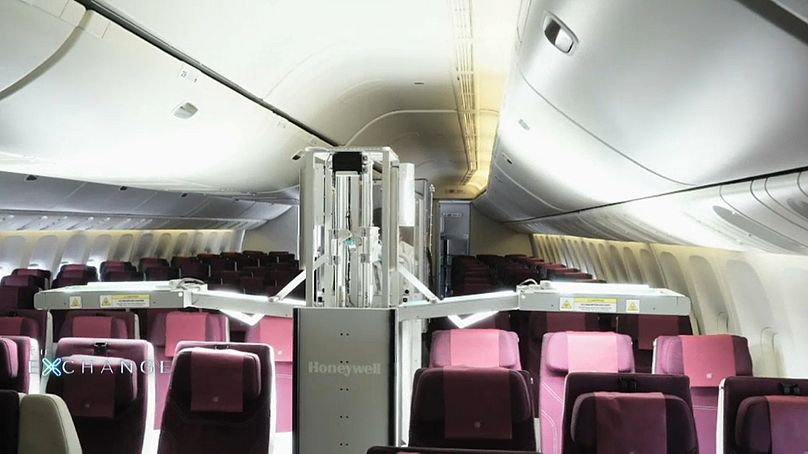From smart screening helmets that use infrared imaging to carry out thermal checks on passengers to a robot that releases ultraviolet-C light in high traffic zones, Hamad International Airport in Qatar is using cutting-edge technology to fight the pandemic.
It's no secret that the airline sector has been hit hard by the pandemic with flights grounded for months on end and thousands of jobs lost.
Travel analyst Simon Calder told Euronews' The Exchange programme that for the last 15 months "skies have been as empty as the average office", with airlines under the impression that travel will not get back to pre-pandemic levels for perhaps four to five years.
"For any airline, the next year is going to be critical and painful," he adds.
Despite the difficulties presented by the pandemic - travel bans and borders closing down, among other things - Qatar Airways has never stopped flying.
"We connected 3.1 million people in the initial stages of the lockdown of the pandemic to deliver them safely to their loved ones. We never shut the hub. Today we are the global connector for the people," the airline group's chief executive, Akbar Al Baker, told The Exchange.
Part of Qatar Airways' success throughout the pandemic has been its base, Hamad international airport. It is one of the most interconnecting hubs across the globe with 60% of the world's population is within an 8-hour flight of Qatar.
COVID safety standards
Hamad International is the first and only airport in the Middle East and Asia to be awarded a Skytrax 5-star COVID-19 airport safety rating.
Advanced technology is being used in the fight against COVID with a disinfectant robot releasing concentrations of ultraviolet C light in high traffic zones to decrease viruses and bacteria.
Smart screening helmets check all passengers using infra-red thermal imaging, artificial intelligence and augmented reality.
The airport and its staff aren't the only ones playing a role in keeping the area COVID safe. All travellers must present their mobile health application to the airport's fully vaccinated personnel.
Onboard a UV cabin system kills pathogens and air filtration systems with HEPA filters remove almost 100% of viral and bacterial contaminants from recirculated air.
Al Baker believes that it's important for everyone to realise that the impact of COVID will be around for a while and people need to adjust their lifestyle, which is exactly what he says Qatar Airways and Hamad international airport have done.
Keeping up with changes
But the airline will not stop there. According to Al Baker, the key to success for any business is taking risks and being decisive. "We have to completely keep on revising our operating strategies and our operating pattern because every day with short notice countries are closing their airports and closing their borders."
It's hard to imagine how any company or industry could have prepared for the global health crisis, but Qatar Airways and Hamad International Airport have successfully managed to keep operations running.






